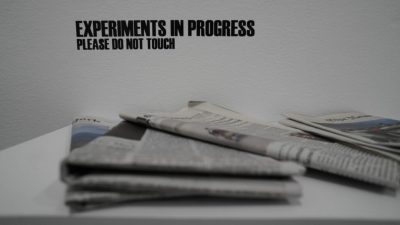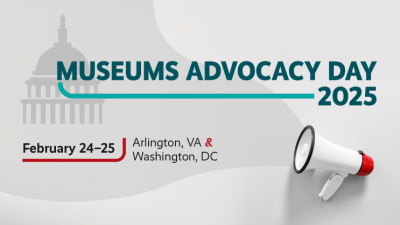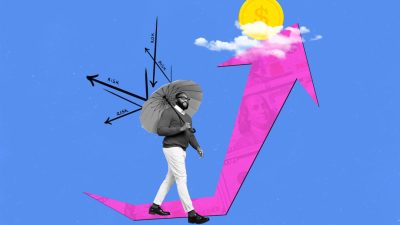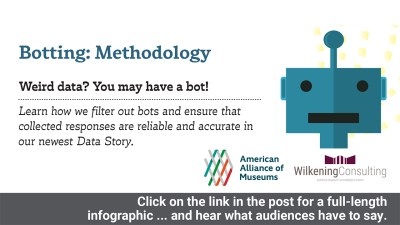
This article originally appeared in the March/April 2022 issue of Museum magazine, a benefit of AAM membership.
Museums have potential as placemakers to support and strengthen their communities.
In my work in and with museums across the years and world, I have seen the museum as both a space and place that can have a transformative impact on those it welcomes and that it lives among. Such museums construct meaning in connection with others, aligned with a more radical practice of placemaking.
This observation has led me to bring my social arts, placemaking, and museum research together to ask: Is the museum a relational object through which we can understand our lived experience?
To begin to answer this, we must unpack “placemaking.” There are many different types of placemaking, depending on intent, who is doing it, and the scale at which it is operating. It can include anything from a mixed-use urban development backed by global finance to a volunteer-led, organic, street-level project. Placemaking uses the existing aspects of a place to their best effect and facilitates creative patterns of activities and connections—cultural, economic, social, environmental—that define a place and support its ongoing evolution.
For me, whatever the scale, the project’s intent makes it one of placemaking, or not. Placemaking is an approach and a set of tools that put the community front and center in determining what the place looks like and how it functions. If the community is not both spearheading this process and an equal stakeholder in it, then the process is not placemaking, and its radical potential is completely lost.
Museums as Placemaker
Many museums have a visible economic and political impact on the places where they reside, and through their education and public programs, they interact with the public. This much we already know. Yet, more recently, we also know that museums are being called on, and are stepping into, more nuanced and embedded roles to serve their communities’ interests and more deeply hear the multitude of voices necessary for their radical change.
Museums work with communities of interest (shared concern), of impact (collective influence), and of place (a near or far locale). By taking a placemaking approach, as defined above, in its community, the museum can drive an agenda for change, growth, and transformation in a way that also builds character and quality of place.
Viewing this through a museum practice lens, museums that host intentional dialogue-led spaces create a “social interstice”: a space of individual and collective encounter that facilitates individual and social interaction and can lead to other exchanges within and without the museum. Questions, provocations, hypotheses, solutions, and actions of the contemporary lived experience are co-created through relational exploration. The education spaces in museums are common ground for this interaction as too are intentional programs such as MASS Action or Tania Bruguera’s School of Integration at Manchester Art Gallery in the UK.
I call such an approach a “cultural learning pedagogy,” which I believe is the core of the museum as placemaker. We have seen this in the roles museums have taken on through the 2020 syndemic and since; as spaces that provide sanctuary and mutual aid, the museum aesthetic has been reimagined as a system of transformation in response to current social crises.
Commoning and Relational Aesthetics
Placemaking is often placed in the realm of “the civic role of museums.” I wish to poke at this colloquial use of the term “civic” by offering the notion of “commons” and the museum as a common space.
Civic is of government as much as it is about citizen engagement—the connection one feels with the larger community—or of being a building that could act as a community focal point. Not all museums can take on a civic role, and indeed, when we consider the museum as community connection and center, we know that this is not always achieved.
Yet, the notion of the museum as commons space suggests that it is a cultural resource to all members of society, the museum ownership held “in common.” I contend that this speaks more to the museum’s site-specific role in contemporary life than to the notion of the civic.
Relational aesthetics, more commonly referred to as relational art, is a concept-to-art practice observed and then theorized by art critic Nicolas Bourriaud: “a set of artistic practices which take as their theoretical and practical point of departure the whole of human relations and their social context, rather than an independent and private space.” From this vantage, the artist is the catalyst, rather than the author, of such art, and the artwork creates a social environment.
In my own social practice placemaking research, I saw the objects co-created by socially engaged artists working with community participants take on this relational role. In one instance, children and elders made go-karts through the drawing shed, a London-based contemporary arts organization that employs a range of art forms to engage with issues and provoke conversation related to social/contested space. The art object—the go-kart—became the “relational object,” a means through which to talk about issues of place in the past, present, and future.
We know that the museum can be this same catalyst, creating a liminal social environment that can help us navigate our world by using museum objects and exhibitions to talk through our contemporary lived experiences. I further propose, however, that we see the museum as the relational object made large. As a relational object, the museum manifests itself as a commons space of plural and diverse knowledges. It becomes a cluster for and of practices and learning pedagogies that, via convivial modes of social exchange with their communities, is concerned with human interactions, collective meaning-making, and place-based change—placemaking.
In practice, this could look like anything from hosting citizen assemblies or town hall events to working with those with expert vocational knowledge to change museum practice—think community gardeners to improve the museum landscape. Long-term community group partnerships could not only collaborate on programs in the museum space but become part of the team through governance and decision-making roles.
Museum as Radical Placemaker
Museums can offer our publics a way to navigate through their lived experience. This goes beyond the museum as a site of co-creation of knowledge, making it an embodied experience. The museum is the site where meaning is navigated and made in a pluralistic way. The museum is a site for developing empathy and democracy and figuring out one’s place in the world.
The barriers to inclusion that many communities of place, impact, or interest face do not exist in isolation from each other, and we can’t collectively address complex place-based issues—such as discrimination, social inequity, or uneven access to quality public spaces—with a singular agenda. Therefore, we must be cognizant of, and actively support, the museum in offering common spaces and practices of everyday creativity.
The museum has to be permeable to its surrounding population, learning from and adapting to its local community. As a commons space, the museum can be a place of deep exploration of collective relation and action. As a radical placemaker, the museum can boost local economies and increase levels of social connection and civic engagement, as well as intersect and advance missions in transportation, housing, employment, health care, environmental sustainability, and education.
If an issue is important to a museum’s neighborhood, then it should be important to the museum—the museum is, after all, a neighbor.
HOW Community-Oriented Is Your Museum?
What do you mean by co-creation in your museum? Does it stand up to scrutiny and accountability by the community?
Who are your communities of impact, interest, and place? Do you have a relationship with them? If not, why not?
Can your museum objects become relational objects that prompt conversation on community challenges and action? Could a historic street image prompt a conversation on the politics of urban development? Or could a painting of food prompt consideration of the climate emergency?
What is your museum learning pedagogy? Your museum community pedagogy? If you don’t have one, who needs to be in the conversation to create one?
What of your museum resources—space, people, collections, knowledge—can you put in service of your communities? Mutual aid is not just for 2020.
Food for Placemaking Thought
Museums interested in placemaking at their institutions might consider the following.
Start from the purview that the community is the expert in its own lives. The museum has its own expert knowledge, as does the community.
Not all artists are equipped to work in a relational way; those who are can synthesize diverse facts, goals, and references and are trained to initiate and advance the creative community project plan and consider their own intentionality, as well as that of the museum.
Consider the call to action in your relational work. When a participant leaves the relational encounter, what skills or signposts do they have to apply what they have experienced to their own lives and communities?
Relational work is based on trust. Why should a community trust you? How can you earn its trust?
A museum relational space for the group-making activity may “just” be a room with chairs in a circle for people to talk, or it may be loud and messy and seemingly haphazard. Regardless, the work is informed by a long artistic heritage, deep creative knowledge, and intellectual rigor. As a museum professional, take your cue from the artists of that practice.
Resources
Tania Bruguera and Tate Neighbours, “The Art of Social Change,” Tate Exchange, 2018
bit.ly/3HjqBRw
Dr. Cara Courage Linktree linktr.ee/CaraCourage
Nicolas Bourriaud, Relational Aesthetics, 1998
Relational aesthetics tate.org.uk/art/art-terms/r/relational-aesthetics
Grant Kester, “Dialogical Aesthetics: A Critical Framework for Littoral Art,” Variant, issue 9, Winter 1999–2000 variant.org.uk/9texts/KesterSupplement.html
the drawing shed thedrawingshed.org
MASS Action museumaction.org/
School of Integration manchesterartgallery.org/exhibitions-and-events/exhibition/school-of-integration/








Hi, Cara, you might look at the work of The Empathetic Museum http://www.empatheticmuseum.com in relation to your thoughts. Best- Gretchen Jennings